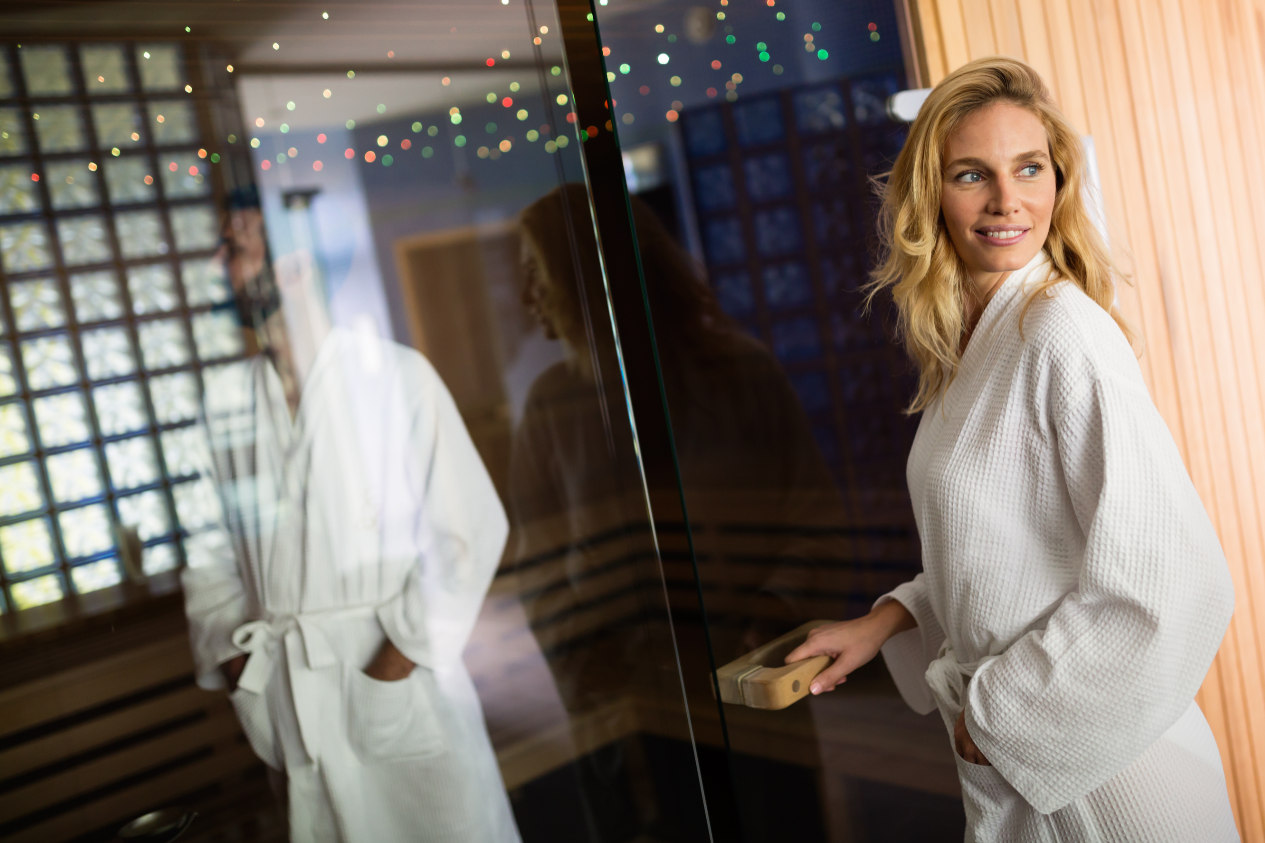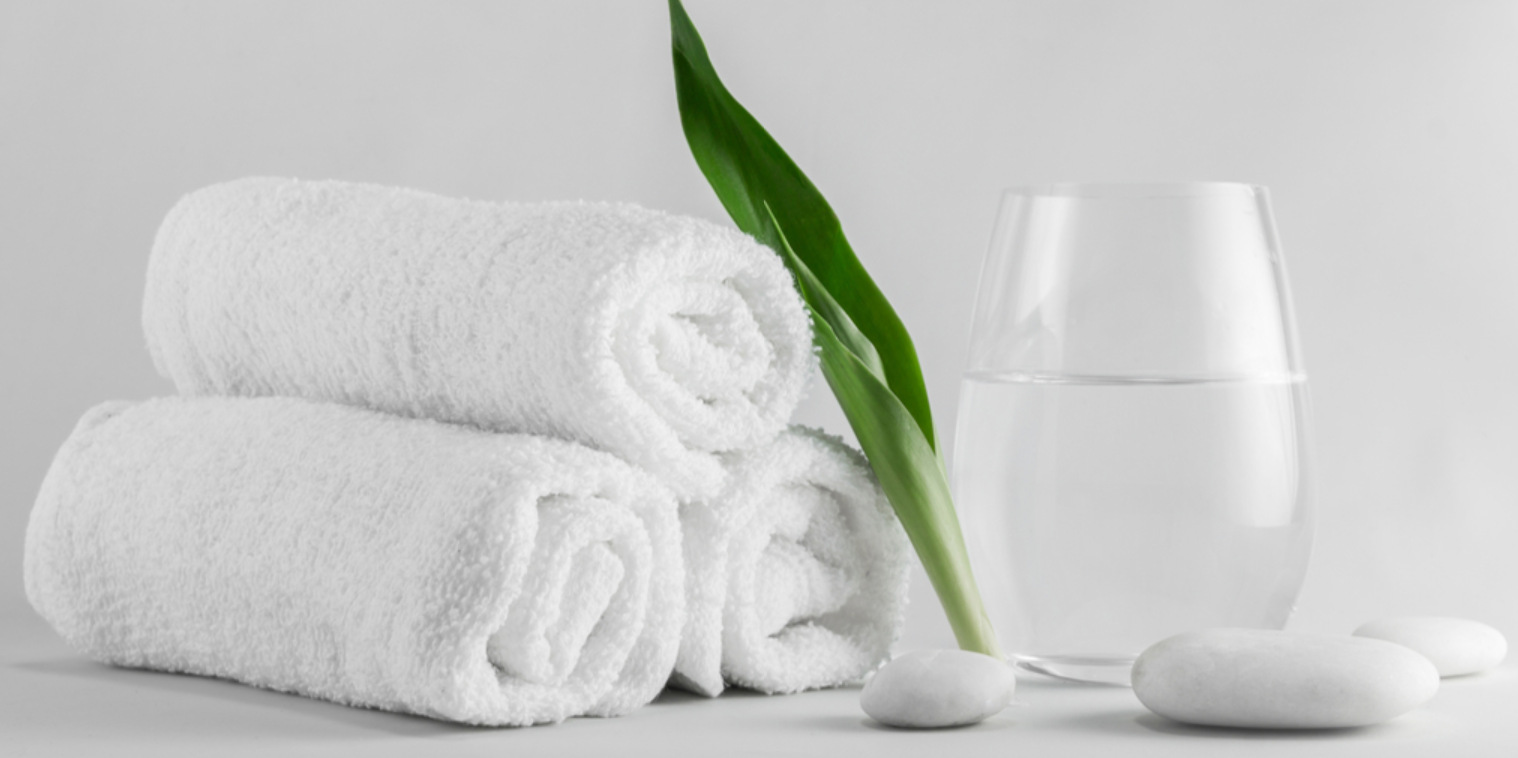
Want to get the most out of your sauna session? Then follow our sauna tips below. Spending time in a sauna should be a deeply relaxing and therapeutic experience. If you’re a regular sauna user you will have established a comfortable routine.
If you’re a beginner you may need some pointers and guidelines. Check out our top tips for sauna below and you’ll soon be maximizing the relaxation and health-promoting effects of a sauna sweat session.
1: Begin With a Shower
The best way to enjoy a sauna session is to start with a shower. Not only does it leave you feeling fresh and invigorated – many sauna users find it helps them sweat more intensely once they begin their session. Showering stimulates blood flow and washes away sweat and debris.

It’s also great for maintaining good hygiene. It helps prevent the spread of bacteria and germs and shows respect for your fellow sauna users. This is especially important when using a shared sauna. Jumping in the shower is one of our top tips for sauna and getting your session off on the right foot.
2: Dress Appropriately
What should you wear in a sauna? If you want to enjoy your session, feel comfortable, and be able to relax – it’s vital you are dressed appropriately. The best advice is to wear something loose-fitting and breathable. If you’re using a public sauna your best bet is to wear swimwear.

This means swimming shorts for men and a bathing suit or comfortable bikini for women. Some saunas allow users to simply wrap up using a towel. If this is something you feel comfortable doing fire ahead. Towels are great for mopping up sweat and keeping the benches clean and dry for fellow users.
Some cultures like to sauna naked. It’s a great way of exposing all your skin to the hot air inside the cabin. If you intend on enjoying a naked sauna you should take a towel with you to sit on – for hygiene purposes. Also, you should avoid wearing jewelry. Especially anything metallic as it will heat up and feel uncomfortable against the skin. For more see What to Wear in a Sauna.
3: Proper Hydration
Proper hydration is key to safely enjoying your sauna experience and is one of the most important sauna tips on this list. When you spend time in a sauna you will sweat, a lot. That means your body will lose water. And, all the water that is lost as sweat needs to be replaced.

You should begin drinking water before you enter the sauna. Continue to take regular sips during your session. And, continue to drink once you are finished. While the amount of water you should drink will vary depending on age, weight, and level of physical activity – a good benchmark is to aim for 3 pints of water. Check out How Much Water Should I Drink In A Sauna for more.
4: Good Sauna Etiquette
Another top sauna tip is to practice good sauna etiquette. If you’re using a public sauna in a hotel, sports center, or spa – you’ll want to use it in a way that doesn’t upset your fellow sauna users. And, there are some generally accepted rules of conduct that regular sauna users like to observe.

Chief amongst these rules is dressing appropriately, using a towel, keeping your voice down, and closing the door promptly when entering and exiting the cabin. And, if you want to ladle some water on the hot coals it’s a good idea to ask others if they’re ok with it before filling the chamber with scorching steam. For more, take a look at our full guide for a complete overview of Proper Sauna Etiquette.
5: Leave Your Phone Outside
This one is basic common sense for most people – leave your phone outside. Don’t take your phone inside the cabin. There’s no need to be scrolling through a phone and checking up on social media when you’re inside a sauna.

The whole idea is to switch off and relax. And, part of this is the ability to disconnect from the outside world. Not only will it irritate your fellow users but camera phones are not permitted in most spa areas such as a sauna. They represent an invasion of privacy.
And, if you’re using a personal private sauna, you’ll still need to leave them outside. The intense heat of a sauna will impact the internal components of the phone and can cause irreparable damage. For more, check out Can You Bring Your Phone Into a Sauna?
RELATED
6: Best Temperature
Another great tip for enjoying sauna is to make sure you have it running at the optimal temperature. And, the best temperature for a sauna depends on the type of sauna you are using. There are three types of sauna – traditional, infrared, and steam.

Traditional saunas are the hottest of the three. They generate intense heat using a stack of coals that elevate the air temperature inside the cabin to a sweltering 160-175°F. Infrared saunas run a little cooler and should be set to a temperature of 110-130°F. And, steam rooms should be run between 110-115°F. For more, check out our full guides on the Best Temperature for Traditional Sauna and the Best Temperature for Infrared Sauna.
7: Using Essential Oils
Another great tip for elevating your sauna experience is to introduce some essential oils. Many people find that adding fragrant oils to their session enhances their experience and boosts relaxation. Essential oils are sourced from carefully selected plants and distilled to boost their fragrant properties.

Used properly they can add an aromatherapy experience to your sauna session. The most popular essential oils used in a sauna are eucalyptus, lavender, peppermint, and lemon. To add essential oil, all you have to do is mix a few drops with water and pour it directly onto the hot sauna stones. The cabin will be quickly filled with fresh scented air.
Each oil has its own distinctive scent and characteristic properties. They are used to relieve anxiety, calm the mind, and for a wide range of potential health benefits. If you’re using a shared sauna you should ask before pouring scented oils on the stones. For more, head over here and check out our complete guide to Essential Oils for Sauna.
8: Chromotherapy
Have you tried sauna chromotherapy? Chromotherapy is a form of light therapy where different colors of light are to promote relaxation, boost energy levels, and their potential therapeutic effect. Many modern saunas are equipped with chromotherapy lights that allow you to set the mood by choosing your preferred light color.

Each color is believed to have a specific effect. The key to enjoying sauna chromotherapy is understanding the role each color plays and how you can use them to enhance your sauna experience. For example, blue light is believed to have a calming effect, and red to boost energy levels. For more, check out What Is Sauna Chromotherapy?
9: How Long Should You Stay In?
Top sauna tip – if you want to enjoy your session, don’t spend too long inside. So, how long should you stay in? The best answer to this question is to limit your session to a maximum of 10-15 minutes. And, just 5 minutes for beginners. Never stay in any longer than feels comfortable. For more see How Long Should You Stay in a Sauna?

If you begin to feel uncomfortable in any way you should exit the sauna and allow your body time to cool down. Experienced sauna users typically spend 10-15 minutes in a sauna. However, beginners should aim for a much shorter session. Five minutes is a good starting point. Then, you can work your up slowly if you feel comfortable doing so.
10: Relax & Enjoy
Perhaps the most important tip for sauna is to relax and enjoy your time inside. After all, that is what you came for. Don’t stress too much about the do’s and don’ts. Instead, sit back, unwind, and enjoy the ride. The intense heat will soon get to work and you’ll begin feeling the pleasant effects of deep penetrating heat – right to the core.

Spending time in a sauna should be a calming and soothing experience. A chance to enjoy some quality ‘me time’. Allow yourself to disconnect from the outside world and enjoy the rejuvenating effects of the hot air as it envelopes your body. And, remember you can step out, take a break and allow your body to cool down at any time if you feel you need to.
11: Try a Sauna Whip
Another great tip for using a sauna is to try using a ‘vihta’ – a sauna whip. The traditional sauna whip is native to Finland and is used to lightly beat or massage your skin during the sauna session. They are made by bundling the leaves and twigs of the birch tree.

Using a sauna whip is believed to stimulate blood flow and cleanse the skin. As the vihta heats up inside the sauna it begins to release natural oils from the leaves and twigs. The use of a sauna whip is common practice in many cultures and is believed to have a wide range of health benefits.
12: Cool Down Afterwards
When you exit the sauna you should allow at least 5-10 minutes to cool down before you make your way to the locker rooms. This will give your body time to adjust and lower core temperature. Many people will continue to sweat profusely during this period while their body readjusts to regular ambient temperature.

If you jump in the shower too soon you will notice your body will continue to sweat even after you get changed. Your clean clothes will be saturated with sweat and you’ll have to jump in the shower a second time to wash off.
To avoid this happening, it’s advised you allow your body time to cool down after exiting the sauna. Then, when you’ve stopped sweating and feel adjusted you should make your way to the shower and locker room.
13: Sauna Tips For Staying Safe
Staying safe when using a sauna is paramount. And one of the most important tips for using a sauna is to ensure you prevent overheating while inside. Never stay in a sauna for longer than feels uncomfortable. If you feel unwell in any way you should leave the sauna and allow your body time to readjust to regular room temperature.

Also, if you have any underlying health conditions you should consult a medical professional before using a sauna. Pregnant women and children should not use a sauna. And people who suffer from high blood pressure, diabetes, heart problems, and angina are advised to avoid using a sauna. For more see – Are Infrared Saunas Safe?
14: Traditional vs Infrared Sauna
What’s the difference between a traditional sauna and an infrared sauna? And, which one is better for you? The difference between these two saunas is the way they heat the body. A traditional sauna uses a heater to heat a stack of sauna stones to a very high temperature. These stones then heat the air inside the sauna, which in turn heats the body.

An infrared sauna uses infrared heating panels to heat the body directly without heating the air inside the sauna cabin. Infrared panels are strategically placed throughout the cabin to maximize body coverage. One key advantage of an infrared sauna is they run at lower temperatures and avoid using intense heat.
15: Rules of Public Sauna
If you’re using a public sauna, then you’ll need to obey the rules for that sauna. Last in our list of sauna tips is to familiarize yourself with the regulations for whatever sauna you are visiting. Public saunas usually have a set of rules printed and on display next to the sauna before you enter.

If you want to avoid embarrassment and let’s face it – most of us do – then take a moment to read over the rules before you jump in. For example, a public sauna may stipulate that you must shower before entry, limit a single session to 10 minutes, and dress appropriately at all times – all top tips for sauna. Check out our full guide to Public Sauna Rules for more.
About the Author
AMY SHAFER
• Allied Health Specialist
Meet Amy, a dedicated advocate of sport, fitness, and the application of infrared sauna therapy. Originally from Texas, she moved to the Sunshine State at an early age. Growing up in the Tampa Bay area, she enrolled in the University of Tampa where she graduated with a BS Degree in Allied Health and a MS in Athletic Training.
Amy’s expertise lies in infrared sauna therapy, with a special focus on the synergistic effects of infrared sauna in combination with traditional therapies. She has a passion for exploring and developing innovative approaches to wellness enhancement and injury recovery.
Amy began her journey as a swimming coach at the YMCA Aquatic Center in Central Florida. Here she developed a passion for applying her sporting knowledge to help individuals achieve their goals. Transitioning to a role more closely aligned with her allied health and athletic training degrees, she delved into the field of infrared sauna therapy. She has been instrumental in pioneering the use of infrared sauna in rehabilitation and injury recovery.
Outside of her professional pursuits, Amy is actively involved in a community-based soup kitchen where she helps support her local homeless community. In her free time, she enjoys cycling and exploring her local national parks, including Biscayne Park, Big Cypress, and the Everglades.
